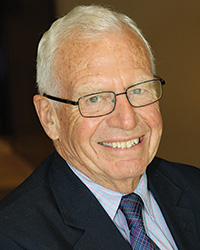
The FED and Functional Monetary Fit - by David Kirk

Kirk&Company
The FED released in mid-March the FOMC meeting updates, the FED forecast and the Fed Beige Book summaries. All three are relatively consistent and upbeat, not without caution and qualification. All three highlight the ongoing risk and uncertainty of the pandemic. Most significantly, the global lag in vaccinations and distribution. The upward positive thrust is more broadly apparent domestically. Trouble spots persist. Improving supplies of the vaccinations, distribution efforts, networking and leadership at all levels of government are hopeful and effectively stabilizing spread. And so, the FED reports. The fiscal complement of infrastructure spending and improvements, following climate policy, will further economic trends in recovery. Ride the wave.
For the built environment, the enterprise and efforts within the commercial real estate industry are adding to the recovering economic trends. Cultural and civic sectors are vigorous in adapting protocols and best practices. And the private sector is supporting these efforts. Collaborative networking is essential to maintaining supply chains and workforce for this effort. All are costly and logically will be sustained as the economy continues a bumpy irregular recovery.
Predictability and consistency are strengths of the built environment. Similarly, adaptation and improvements to the structures, systems, and operations must be made. Safe, secure and healthy venues sustain the predictable and consistent expectations. The economy is delivering increasing demand and the property derivative must respond with supply. Environmentally sound practices have been the mission and must dominate all activity in the changing functioning-built environment.
The White House has drafted a $2-3 trillion federal spending bill. Monetary action is loaded. And bipartisan support (room for pork) is prominently featured. Transportation, broadband, energy transmission and grids, safety and security enhancements, and more. Tax provisions will be tricky and more controversial than spending provisions. Constituency pressure to act expeditiously will be broadly broadcast, particularly after losing four years without any activity. The pandemic, natural disasters and cybercrimes have heightened the need for resilience, preparedness and connectivity. All with infrastructure impact. That’s not pork. That’s lifelines. And the built environment will be primary beneficiary.
The FED affirmed full employment and 2% inflation targets, and, further, the ongoing purchase of government and GSE investments at or above current levels. The FED forecasts by the FED district bank presidents are based on FED plan and expectations. The anecdotal surveys summarized in the Beige Book describe stable to marginally improving local economic conditions and outlook. Taken together, this information provides derivative foundation for the built environment. Infrastructure is integral to the built environment and the fiscal complement to FED monetary action. And the highest priority in congress and oval office and appeals to bipartisan support. Climate policy adherence by all sectors in infrastructure spending offers positive, if not rosy, outlook. Ride the wave.
David Kirk is founder, chief executive officer of Kirk & Company, Real Estate Counselors of Boston, Mass.